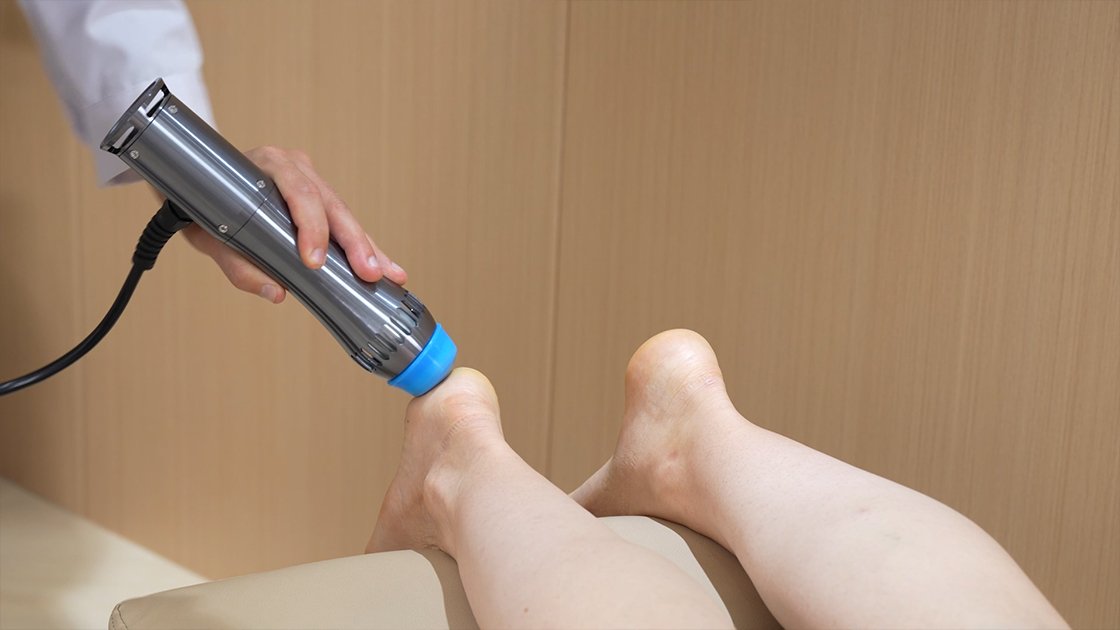Overview of Plantar Fasciitis
Plantar fasciitis is a common foot condition that causes pain and inflammation in the plantar fascia. This thick band of tissue runs across the bottom of your foot, connecting your heel bone to your toes. It often causes stabbing pain, especially with your first steps in the morning. The pain usually decreases as you move but can return after long periods of standing or sitting.
Runners, overweight individuals, and those who wear shoes with poor support commonly suffer from plantar fasciitis. Traditional treatments include rest, ice, physical therapy, and nonsteroidal anti-inflammatory drugs (NSAIDs). However, these methods may not always provide sufficient relief, leading patients to seek alternative treatments like shockwave therapy.
What is Shockwave Therapy?
Shockwave therapy, or extracorporeal shockwave therapy (ESWT), is a non-invasive treatment that uses acoustic waves to heal damaged tissues. A device applied to the skin sends high-energy shockwaves into the affected area. These shockwaves stimulate the body’s natural healing processes, increasing blood flow, reducing inflammation, and promoting tissue regeneration.
Initially used to break up kidney stones, shockwave therapy has been adapted for treating various musculoskeletal conditions, including plantar fasciitis. The treatment is usually performed in a clinic and does not require anesthesia.
Benefits of Shockwave Therapy for Plantar Fasciitis
Shockwave therapy provides significant pain relief by reducing nerve sensitivity. It also promotes the regeneration of the plantar fascia tissue, addressing the root cause of the condition rather than just masking the symptoms.
Another advantage of shockwave therapy is its non-invasive nature. Unlike surgery, ESWT does not involve incisions or significant downtime. Patients can often return to their normal activities shortly after treatment, making it a convenient option for those with busy lifestyles.
Shockwave therapy also has minimal side effects. Some patients may experience slight discomfort or bruising at the treatment site, but these symptoms typically resolve quickly. The risk of serious complications is low compared to surgical interventions.
Clinical Evidence and Success Rates
Numerous studies have shown the effectiveness of shockwave therapy for treating plantar fasciitis. Research indicates that ESWT can significantly reduce pain and improve function in patients who have not responded to conventional treatments.
A study in the Journal of Orthopaedic Research found that shockwave therapy resulted in a 60-70% improvement in pain and function among patients with chronic plantar fasciitis. Another study in the American Journal of Sports Medicine reported that 80% of participants experienced significant pain relief and improved mobility following ESWT.
Patient testimonials support these positive outcomes. Many individuals report substantial improvements in their symptoms after undergoing shockwave therapy, often describing it as life-changing.
What to Expect During and After Treatment
During a shockwave therapy session, a clinician applies a handheld device to the affected area of your foot. This device emits high-energy shockwaves that penetrate the skin and target the plantar fascia. Each session typically lasts about 20-30 minutes, and most patients require 3-5 sessions spaced a week apart for optimal results.
After the treatment, you may experience mild discomfort or swelling in the treated area. These symptoms are usually temporary and subside within a few days. It’s important to follow your clinician’s post-treatment care instructions, which may include rest, ice application, and avoiding strenuous activities for a short period.
In the weeks following shockwave therapy, you should gradually notice an improvement in your symptoms. Pain relief and increased mobility may occur within a few days, but the full benefits of the treatment typically manifest over several weeks as the tissue continues to heal.
Conclusion
Shockwave therapy offers a promising solution for those suffering from plantar fasciitis, especially when traditional treatments have failed. Its ability to provide pain relief, promote tissue regeneration, and do so with minimal side effects makes it an attractive option for many patients. With a growing body of clinical evidence supporting its efficacy, shockwave therapy is becoming an increasingly popular choice for managing this painful condition and restoring optimal foot health.
